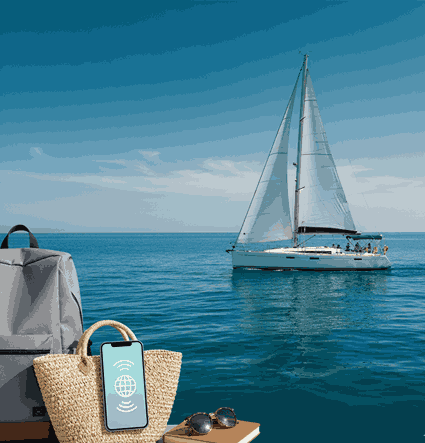February is one of those months that can go either way. You can chase sunshine on a Caribbean beach, explore European cities without the crowds, or embrace full winter mode in a snowy mountain town. This list of the best places to travel in February covers all of it.
- 1. Turks and Caicos
- Top snorkeling spots in Turks and Caicos
- Luxury resorts in Grace Bay
- 2. New Orleans, Louisiana
- Mardi Gras parade routes and schedules
- Creole cuisine: what to try in New Orleans
- 3. Havana, Cuba
- Best Cuban restaurants in Old Havana
- 4. Cape Town, South Africa
- Table Mountain hiking trails
- Penguins at Boulders Beach
- 5. St. Lucia
- Best resorts near Soufrière
- 6. Valencia, Spain
- City of Arts and Sciences
- 7. Bali, Indonesia
- Best villas in Seminyak
- Temple visits in Bali
- 8. Antigua, Guatemala
- Volcano hiking near Antigua
- Coffee plantations
- 9. Miami, Florida
- Best beach access in Miami
- Everglades National Park
- 10. Rome, Italy
- 11. Lisbon, Portugal
- Day trips to Sintra
- 12. Puerto Vallarta, Mexico
- 13. Egypt
- 14. Sri Lanka
- Safaris in Sri Lanka
- 15. Venice, Italy
- Best hotels near San Marco
- 16. Torres del Paine, Chile
- Wildlife spotting in Torres del Paine
- 17. Kyoto, Japan
- Kaiseki dining in Kyoto
- 18. Banff, Canada
- Best mountain lodges in Banff
- 19. Iceland
- Iceland Golden Circle route highlights
- 20. Zermatt, Switzerland
- Read more
I’ve picked 20 destinations where February hits just right, with great weather, cool festivals, and way fewer tourists than you’d deal with in peak season.
1. Turks and Caicos
February in Turks and Caicos means zero humidity, consistent sunshine, and water so clear you can see your toes from chest-deep. The temperatures hover around 80°F, and the tourist rush from Christmas and New Year’s has finally calmed down.
Grace Bay consistently ranks as one of the best beaches in the world, and in February, you’ll understand why without fighting for a spot in the sand.
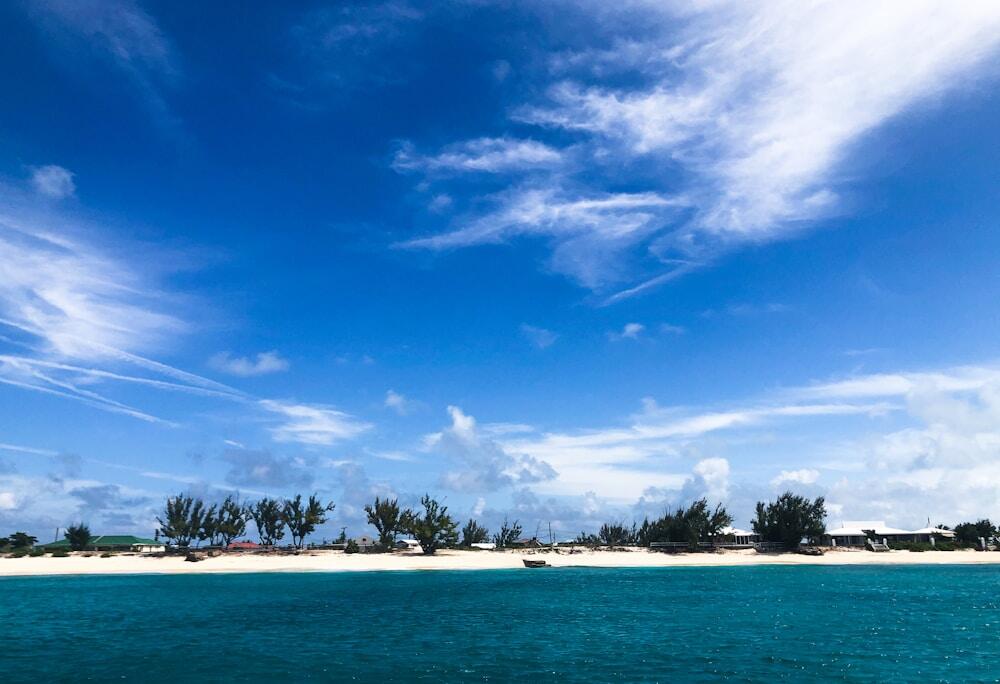
The 12-mile stretch feels almost private during this time. The water stays calm, making it perfect for families with kids or anyone who just wants to float without getting tossed around.
Most of the beachfront is public access, so you’re not locked into staying at a resort to enjoy it. Bring your own chair or rent one from the local vendors for around $15.
Top snorkeling spots in Turks and Caicos
The barrier reef here is one of the longest in the Caribbean, and Smith’s Reef is where I’d start if you’re new to snorkeling. You can wade right in from the beach and immediately spot parrotfish, sea turtles, and rays.
- Smith’s Reef: Easy shore access, great for beginners, turtles everywhere
- Bight Reef: Just off Grace Bay, calm conditions, tons of tropical fish
- Coral Gardens: Deeper spot, better for experienced snorkelers, healthy coral formations
Water visibility in February is exceptional. You’re looking at 100+ feet on most days.
Luxury resorts in Grace Bay
If you’re splurging, Grace Bay has some of the best beachfront properties in the Caribbean. February is peak season, so expect higher rates, but the consistent weather and calm seas make it worth it.
- The Palms: All-inclusive option, three pools, ocean-view suites start around $800/night
- The Shore Club: Adults-only sections available, modern design, beachfront infinity pool
- Seven Stars Resort: Quieter vibe, spacious suites with full kitchens, less party atmosphere
- Grace Bay Club: Boutique luxury, personalized service, multiple pools, and restaurants
- The Ritz-Carlton: Full-service resort, kids’ club, spa, multiple dining options, rooms from $900/night
- Beaches Turks & Caicos: All-inclusive family resort, water park, unlimited dining, kids stay free
- Point Grace: Intimate boutique property, only 28 suites, British Colonial design, complimentary water sports
Most resorts offer packages that include meals, water sports, and activities.
2. New Orleans, Louisiana
Mardi Gras takes over the entire city in February, and there’s nothing quite like it. The parades, the music, the food, it all hits different when you’re standing on a street corner catching beads at 2 PM on a Tuesday.
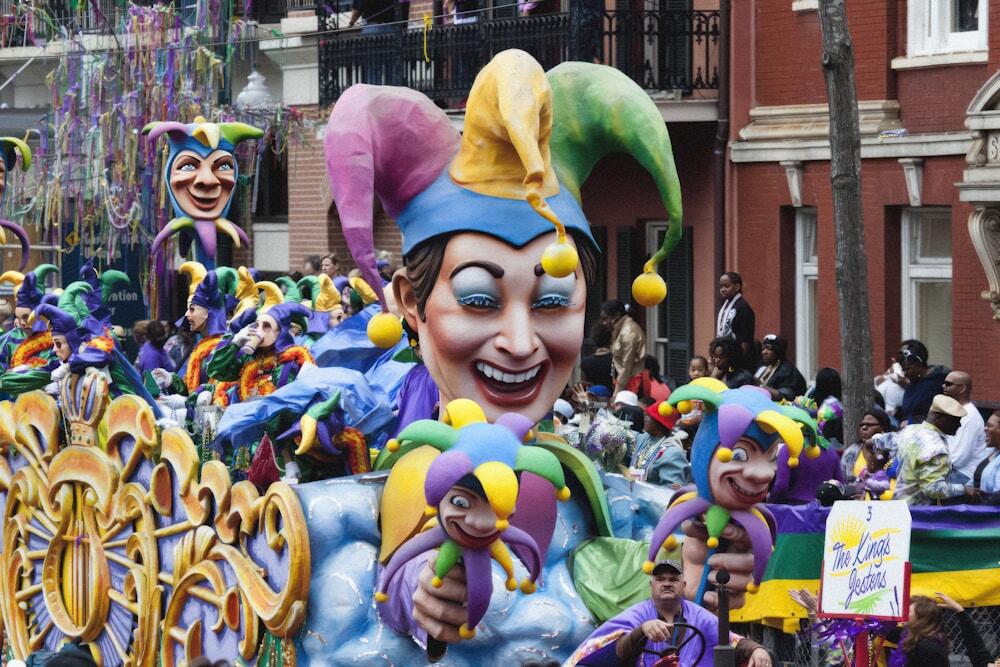
Mardi Gras parade routes and schedules
The main parades roll through the Uptown and Mid-City neighborhoods, and if you want a good spot, you need to claim it early. St. Charles Avenue is the classic route, but it gets packed. Napoleon Avenue is a local favorite with better views and easier parking.
| Parade | Date | Best Viewing Spot | Vibe |
|---|---|---|---|
| Endymion | Saturday before Mardi Gras | Mid-City | Massive floats, huge crowds |
| Bacchus | Sunday before Mardi Gras | Uptown | Celebrity theme, family-friendly |
| Zulu | Mardi Gras day | Jackson Avenue | Iconic, historic krewe |
| Rex | Mardi Gras day | St. Charles Avenue | Traditional, old-school NOLA |
Download the parade tracker apps before you go. They update routes in real time when things get delayed, which happens often.
Creole cuisine: what to try in New Orleans
You can’t leave without eating your way through the city. Skip the chains and hit the spots where locals line up. Commander’s Palace for brunch (get the turtle soup), Willie Mae’s Scotch House for fried chicken, and Cochon for boudin and cracklins.
- Gumbo: Dark roux, seafood or chicken and sausage, served over rice
- Po’ boys: Fried shrimp or roast beef, dressed with lettuce, tomato, pickles, mayo
- Beignets: Café Du Monde is the move, but Morning Call has shorter lines
- Chargrilled oysters: Drago’s or Acme Oyster House
February is crawfish season, so if you see étouffée or a boil on the menu, order it.
3. Havana, Cuba
Havana in February feels like stepping into a time capsule with perfect weather. Mid-70s during the day, low humidity, and almost no rain. The city is vibrant, crumbling, and beautiful all at once.
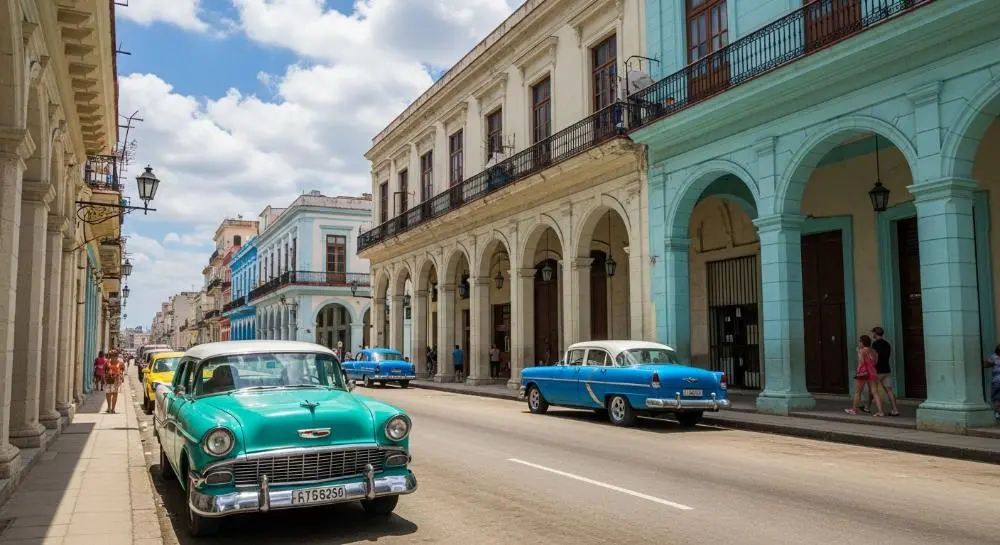
The 1950s American cars are the main way to see the city. You can book a private tour for around $30–$50 per hour, and the drivers will take you along the Malecón, through Old Havana, and out to the newer neighborhoods.
Negotiate the price before you get in, and make sure they understand where you want to go. Most drivers speak enough English to get by, but a little Spanish helps.
Best Cuban restaurants in Old Havana
Cuban food gets a bad rap, but when it’s done right, it’s simple and satisfying. Paladares (privately-owned restaurants) are where you’ll find the best meals. La Guarida is the most famous, but you need a reservation weeks in advance.
- Doña Eutimia: Ropa vieja that melts in your mouth, tucked in a tiny alley
- San Cristóbal: Where Obama ate, solid seafood and rice dishes
- El Cocinero: Rooftop bar and restaurant in a converted cooking oil factory
Expect to pay $15–$25 per person for a full meal with drinks. Cash only, and bring USD or Euros to exchange.
4. Cape Town, South Africa
February is the height of summer in Cape Town, and the city is firing on all cylinders: long beach days, outdoor concerts, and farm-to-table dining with views of Table Mountain.
Table Mountain hiking trails
You can take the cable car up Table Mountain, but hiking it is way more rewarding, plus it’s one of the easiest mountain ascents in the world. Platteklip Gorge is the most direct route: steep, exposed, and takes about 2–3 hours. India Venster is more technical with some scrambling, but the views are better.
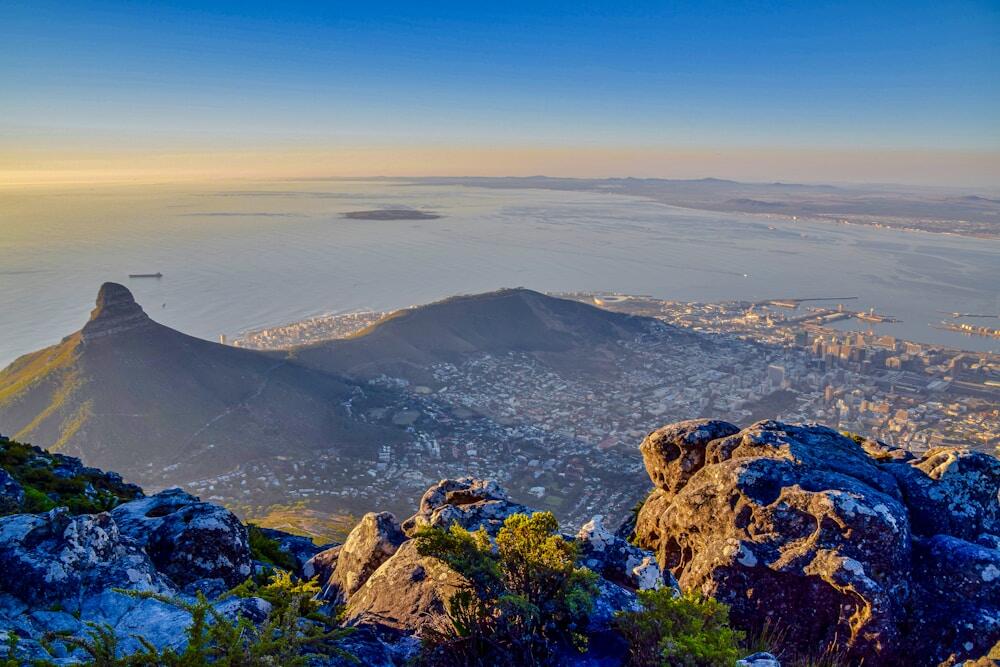
Start early to avoid the midday heat, and bring at least 2 liters of water per person. The weather can change fast up top, so pack a light jacket even if it’s sunny at the base.
Penguins at Boulders Beach
The African penguin colony at Boulders Beach is one of those rare wildlife experiences that doesn’t feel forced. You’re walking on wooden boardwalks while dozens of penguins waddle around below you, totally unbothered.
| Boulders Beach | ~$8 USD | Early morning | Fewer crowds, active penguins |
| Foxy Beach | ~$8 USD | Afternoon | Swimming area, penguin viewing |
The beach is about 45 minutes from Cape Town, and it’s worth combining with a drive down to Cape Point.
5. St. Lucia
St. Lucia in February is warm, dry, and stunning. The Pitons dominate the skyline, and the island feels lush without the oppressive humidity you get later in the year.
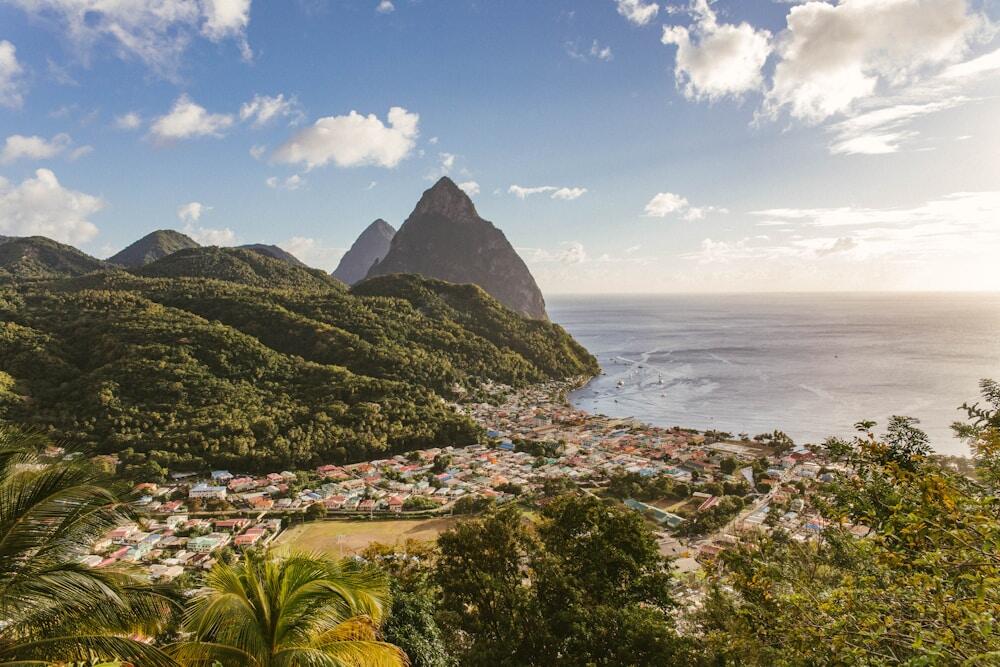
The Gros Piton hike is challenging but doable if you’re in decent shape. It’s about 4 miles round trip with a steep climb that takes 2–3 hours. You need a guide (required by law), which costs around $50.
The views from the top are worth every step. You’re looking out over the Caribbean, the entire southern coast, and Petit Piton right across from you.
Best resorts near Soufrière
Soufrière is where the Pitons are, and it’s also where you’ll find some of the best resorts on the island. The views alone make this area worth staying in, and most properties have direct Piton sightlines.
- Jade Mountain: Open-wall infinity pool suites (no fourth wall), unobstructed Piton views from bed, rooms start around $1,200/night, adults-only
- Ladera Resort: Three-walled suites with private plunge pools, more affordable than Jade Mountain, solar-powered and eco-conscious, on-site organic farm
- Sugar Beach, A Viceroy Resort: Set between the Pitons on a former plantation, family-friendly with kids’ programs, beachfront bungalows and hillside villas, water sports included
- Anse Chastanet: 600-acre estate, tree-house style rooms, excellent snorkeling and diving, two beaches on property
- Stonefield Villa Resort: Private pool villas, budget-friendly option, working cocoa plantation on-site, cooking classes available
- Boucan by Hotel Chocolat: Boutique cacao estate resort, chocolate-themed spa treatments, farm-to-table restaurant, rooms from $400/night
- Fond Doux Plantation & Resort: Historic working plantation, cottage-style accommodations, organic gardens, authentic local experience
February pricing runs high across the board, but the weather is perfect, and you’re avoiding the summer heat.
6. Valencia, Spain
Valencia in February is mild, sunny, and gearing up for Las Fallas, one of the wildest festivals in Europe. The city is underrated compared to Barcelona and Madrid, which means fewer tourists and better prices.
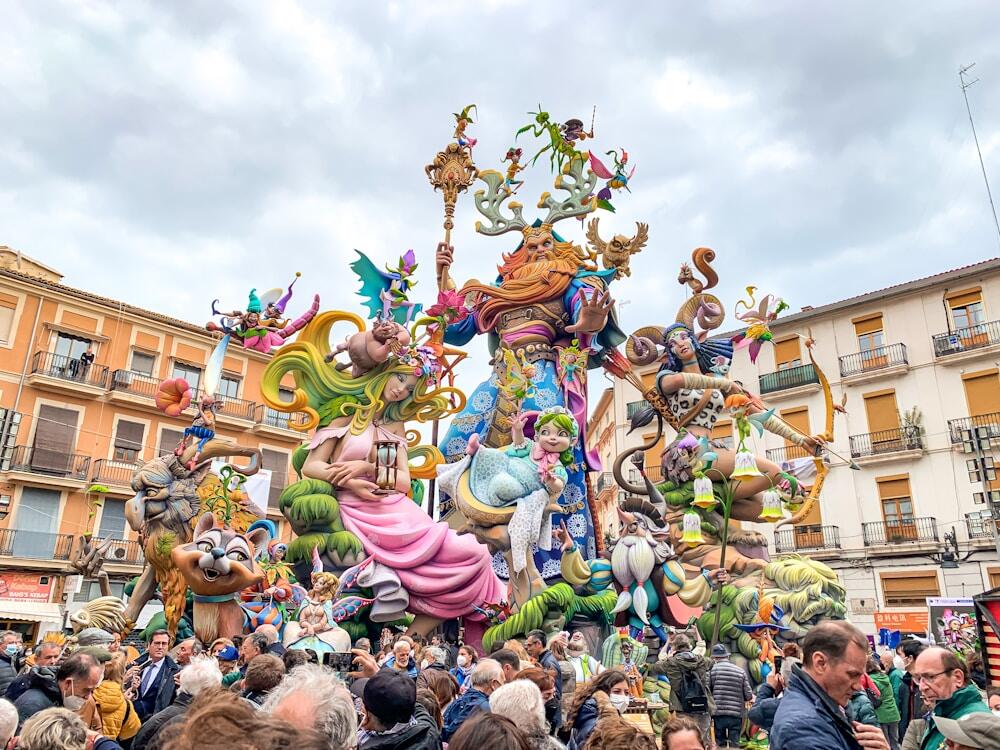
Las Fallas officially kicks off in mid-March, but February is when you start seeing the massive papier-mâché sculptures (called fallas) being built around the city. Neighborhoods compete to create the most impressive displays, and they’re incredibly detailed.
The festival ends with everything being burned in a massive bonfire, but visiting in February lets you see the work in progress and explore the city without the chaos.
City of Arts and Sciences
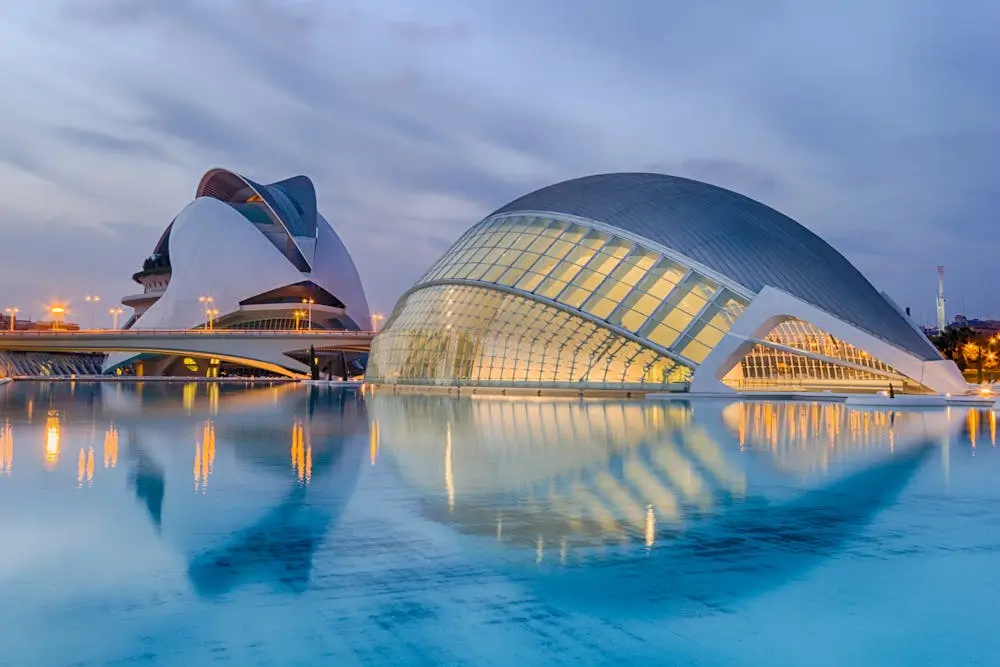
This futuristic complex designed by Santiago Calatrava is Valencia’s biggest draw. The architecture alone is worth the visit: sweeping white structures that look like they belong in a sci-fi movie.
| Oceanogràfic | ~$35 USD | Largest aquarium in Europe, marine life |
| Hemisfèric | ~$10 USD | IMAX theater, planetarium shows |
| Science Museum | ~$9 USD | Interactive exhibits, hands-on displays |
You can spend an entire day here, and combo tickets save you about 20% if you’re planning to visit multiple venues.
7. Bali, Indonesia
Bali in February sits right in the middle of the wet season, but that doesn’t mean it’s raining all day. You’ll get afternoon showers, but mornings are usually clear, and the island is greener and less crowded than in the dry season.

The Tegallalang Rice Terraces are the most photographed spot in Ubud, but they’re worth visiting despite the Instagram crowd. February’s rain keeps everything vibrant green, and the terraces are actively being farmed.
Entry is around $2, and you can walk through the paddies on narrow paths. Skip the swing photo ops unless you’re into that. They charge $10–$20, and the lines are long.
Best villas in Seminyak
Seminyak is where you go if you want beach access, good restaurants, and a bit of nightlife without the chaos of Kuta. Private villas are the move here, and you can find solid options for $100–$200 per night with a pool.
- Villa Bali Asri: Private pool, central location, full kitchen, walk to beach in 10 minutes
- The Elysian: Boutique hotel vibe, rooftop bar, walking distance to beach, trendy crowd
- Hu’u Villas: Modern design, quiet neighborhood, great for couples, minimalist aesthetic
- Villa Kubu: Traditional Balinese compound, multiple bedrooms, lush gardens, staff included
- The Legian: Beachfront suites, all-ocean views, infinity pools, high-end option from $400/night
- Samaja Villas: Family-friendly, enclosed pool areas, full kitchens, near Eat Street
- Peppers Seminyak: Apartment-style villas, rooftop pool, washer/dryer in units, longer stays
Book through Airbnb or Booking.com, and read the reviews carefully. Some “villas” are just glorified guesthouses.
Temple visits in Bali
Bali has thousands of temples, but a few stand out. Tanah Lot sits on a rock formation in the ocean and is best visited at sunset. Uluwatu Temple is perched on a cliff with views over the Indian Ocean, and the Kecak fire dance at sunset is a must-see.
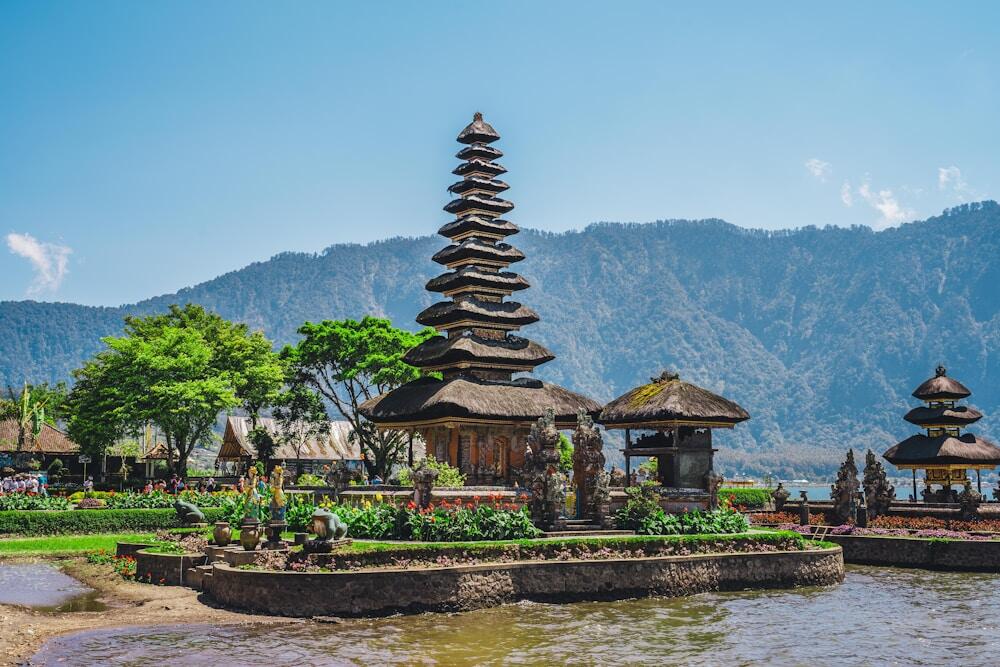
Entry fees are usually $3–$5, and you’ll need to wear a sarong (they provide them if you don’t have one). Be respectful, keep your voice down, and watch out for the monkeys. They’ll steal your sunglasses.
“Bali in the wet season is quieter, cheaper, and just as beautiful. The rain usually hits in the afternoon, so plan your mornings and you’ll be fine.” — Lonely Planet
8. Antigua, Guatemala
Antigua in February is dry, sunny, and perfect for exploring the cobblestone streets and colonial architecture. The city sits in a valley surrounded by volcanoes, and the views are everywhere.
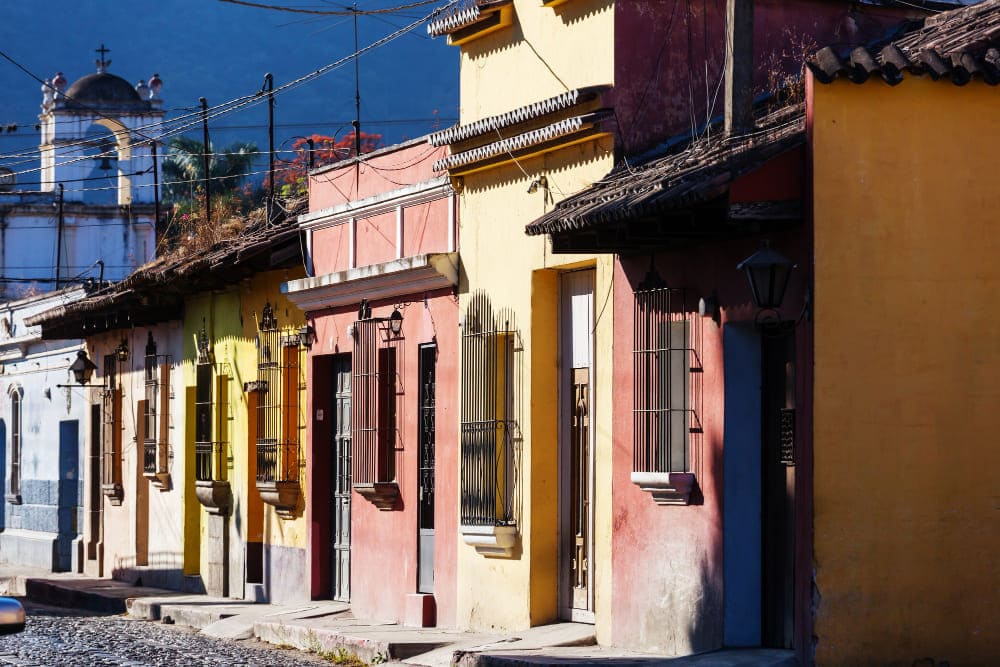
Antigua is a UNESCO World Heritage Site, and the entire city feels like a living museum. The buildings are painted in bright colors, and many of the old churches and monasteries are still standing (or beautifully ruined).
Walk down 5th Avenue for shopping and cafes, then wander the side streets to see the real character of the city. Arco de Santa Catalina is the most iconic photo spot, but it’s crowded all day.
Volcano hiking near Antigua
Acatenango is the big one: an overnight hike that gets you to the summit in time to watch Volcán de Fuego erupt across the valley. Tours cost around $60–$80 and include guides, gear, and meals. It’s cold at the top, so bring layers.
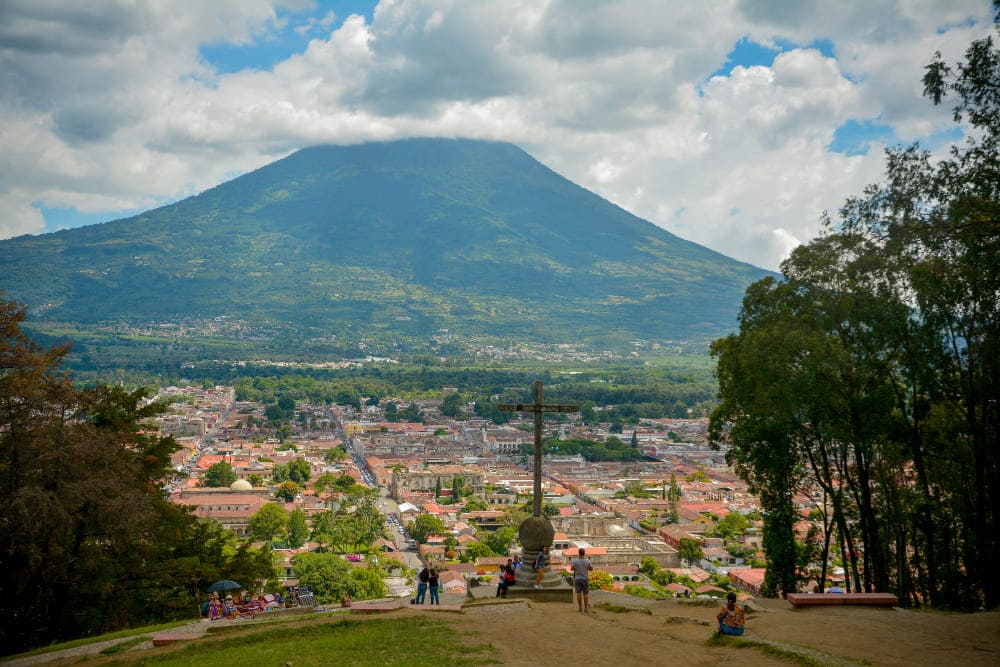
If you want something easier, Pacaya is a half-day hike where you can roast marshmallows over volcanic vents. It’s touristy but still fun.
Coffee plantations
Antigua is surrounded by coffee farms, and February is the prime harvest season. You can tour a plantation, see the process from bean to cup, and taste some of the best coffee in Central America.
- Finca Filadelfia: Historic plantation, full tours, on-site cafe
- Cafetera Azotea: Organic farm, cheese factory on-site, great for families
- De la Gente: Cooperative-owned, ethical sourcing, excellent coffee
Tours run $10–$25, depending on the depth and length.
9. Miami, Florida
Miami in February is exactly what you need if you’re escaping winter up north. Mid-70s, sunny, and the beach scene is in full swing without the summer humidity.
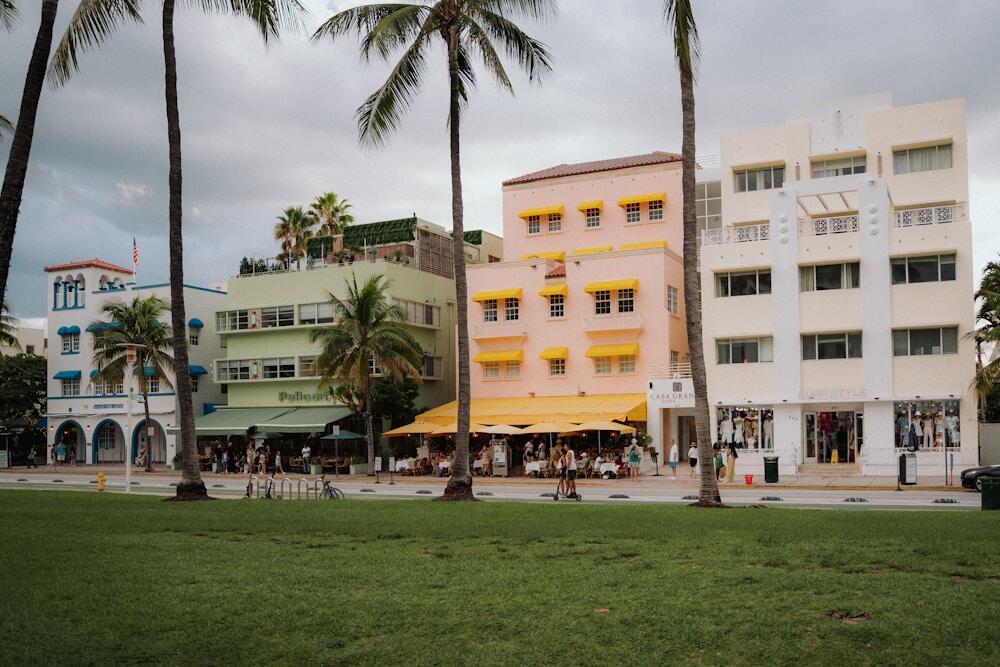
The Art Deco Historic District is the largest collection of Art Deco architecture in the world, and just walking Ocean Drive feels like you’re in a movie. The pastel-colored buildings, neon signs, and palm trees make South Beach instantly recognizable.
Best beach access in Miami
South Beach gets all the attention, but it’s also the most crowded. If you want more space, head north to Mid-Beach or Surfside. The sand is just as good, the water is the same, and you won’t be elbow-to-elbow with tourists.
| South Beach | Busy, see-and-be-seen | $20+ for lots | People watching, nightlife |
| Mid-Beach | Quieter, locals | Easier, some street | Families, relaxing |
| Surfside | Laid-back, residential | Street parking | Escaping crowds |
Bring your own chairs and umbrellas to save money, or rent from the vendors for around $30 for the day.
Everglades National Park
The Everglades are about 45 minutes from Miami, and February is the best time to visit. It’s dry season, so the mosquitoes are manageable, and wildlife is concentrated around water sources.
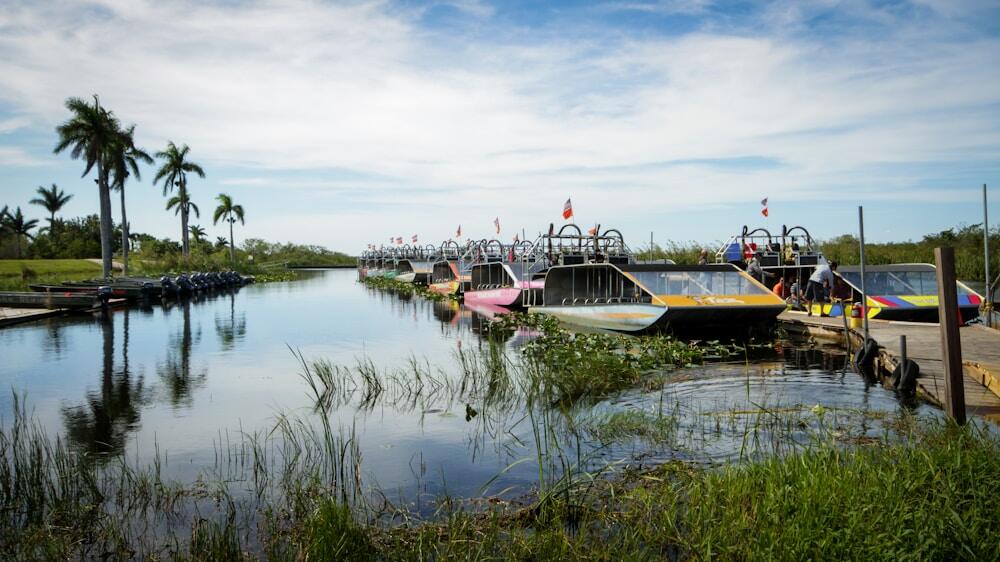
Take an airboat tour ($30–$60) to see alligators, wading birds, and the unique ecosystem up close. Shark Valley has a 15-mile loop trail that’s perfect for biking, and you’ll spot gators sunbathing along the way.
10. Rome, Italy
Rome in February is cold by Italian standards (50s–60s°F), but it’s empty compared to summer. You can walk into the Pantheon without waiting, and the lines at major sites are short.
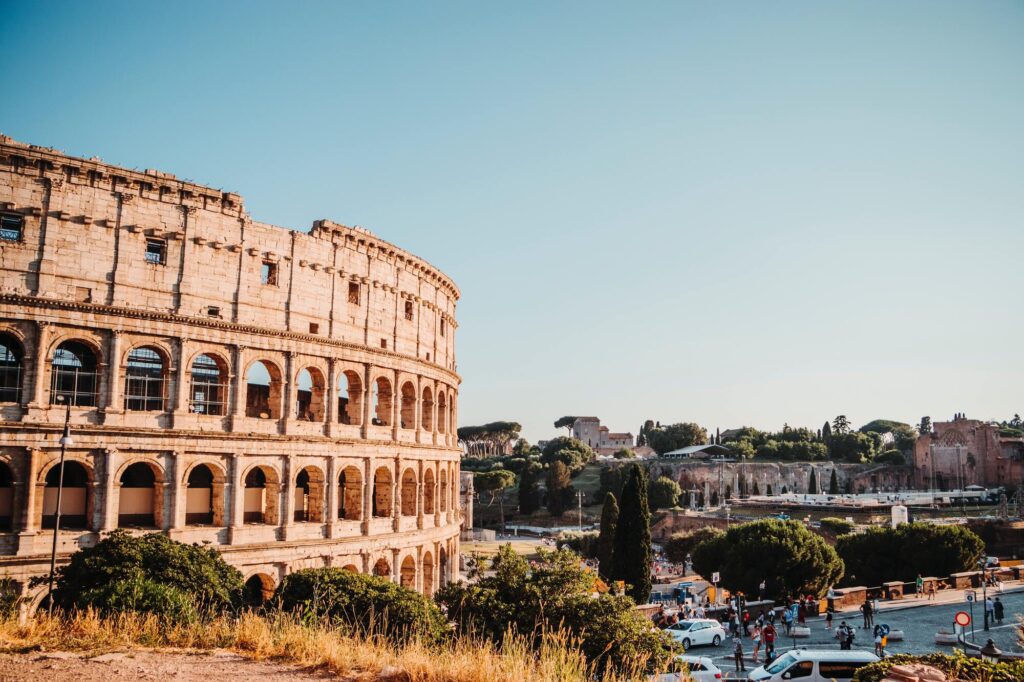
The Colosseum is Rome’s marquee attraction, and February is when you can actually enjoy it without being crushed by tour groups. Book tickets in advance online (around $18) to skip the line, and combine it with the Roman Forum and Palatine Hill on the same ticket.
The Vatican Museums and Sistine Chapel are overwhelming any time of year, but February gives you breathing room. Tickets are about $20 online, and I’d recommend booking the first entry slot of the day.
“Rome in winter is a different city. The light is softer, the piazzas are yours, and you can actually hear yourself think in the museums.” — Rick Steves
The Sistine Chapel is at the end of the museum route, so you’ll walk through miles of hallways first. Don’t rush. The Raphael Rooms and the Gallery of Maps are incredible.
11. Lisbon, Portugal
Lisbon in February is cool, occasionally rainy, and absolutely charming. The city’s hills, trams, and tile-covered buildings look even better under overcast skies, and you’ll have most of it to yourself.
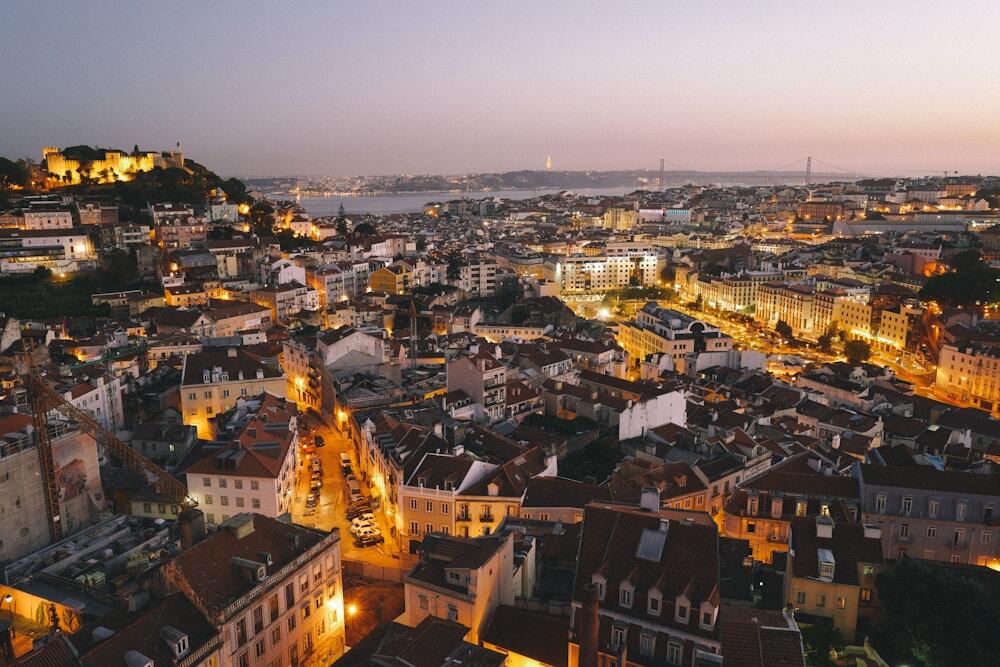
Lisbon is built on seven hills, and the miradouros (viewpoints) are where you catch your breath and take in the city. Miradouro da Senhora do Monte is the highest and offers panoramic views over the entire city and the Tagus River.
- Miradouro de Santa Luzia: Tiled terrace, views over Alfama
- Miradouro da Graça: Local favorite, cafe on-site, sunset spot
- Portas do Sol: Historic neighborhood, great for photos
Grab a beer or coffee and just sit. That’s the whole point.
Day trips to Sintra
Sintra is 30 minutes from Lisbon by train, and it feels like a fairytale village. Pena Palace is the main draw: a colorful hilltop castle with views over the surrounding forest and coastline.
| Pena Palace | ~$15 USD | Colorful castle, panoramic views | 2 hours |
| Quinta da Regaleira | ~$10 USD | Gothic mansion, underground tunnels | 2 hours |
| Moorish Castle | ~$10 USD | Ancient ruins, hiking trails | 1.5 hours |
You can see two or three sites in a day if you start early. Buy tickets online to skip the lines.
12. Puerto Vallarta, Mexico
Puerto Vallarta in February is high season for a reason. It’s dry, warm, and the sunsets over Banderas Bay are some of the best in Mexico.
The Malecón is the main boardwalk, but the beaches south of the city are where you want to be. Playa Conchas Chinas is a local favorite with rocky coves and clear water. Playa Mismaloya is where they filmed The Night of the Iguana, and it’s still quiet and undeveloped.
Further south, Yelapa and Quimixto are only accessible by boat, which keeps the crowds thin. Water taxis leave from Boca de Tomatlán for around $10 round trip.
13. Egypt
Egypt in February is ideal with warm days (70s°F), cool nights, and the crowds are manageable compared to the madness of December and January. The light is perfect for photos, and you can explore without overheating.

The Pyramids are exactly as impressive as you think they’ll be, and seeing them in person is surreal. Get there right when they open (8 AM) to beat the crowds and the heat. Entry is around $10, and you can pay extra to go inside the Great Pyramid (another $15).
14. Sri Lanka
Sri Lanka in February is dry on the west and south coasts, making it perfect for beaches, temples, and safaris. The island is compact enough to see multiple regions in one trip.
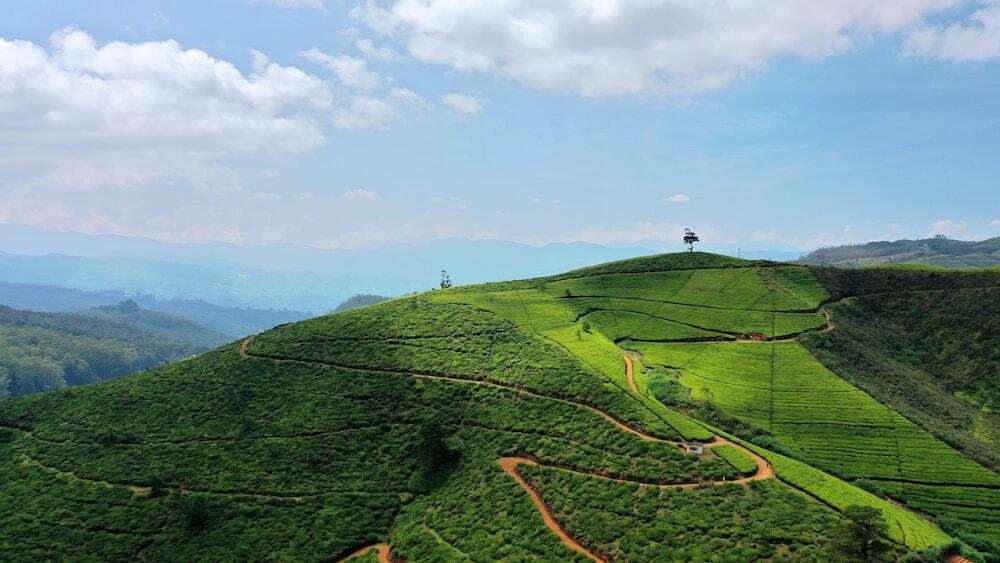
Ella is a small mountain town surrounded by tea plantations, and the landscape is stunning. The train ride from Kandy to Ella is one of the most scenic in the world with rolling hills, tea pickers in the fields, and waterfalls along the way.
Safaris in Sri Lanka
Yala has the highest density of leopards in the world, and February is a great time to spot them. The dry season means animals congregate around water sources, making them easier to see.
| Yala | Leopards, elephants | ~$30 USD | Early morning |
| Udawalawe | Elephants | ~$25 USD | Afternoon |
| Wilpattu | Secluded, fewer crowds | ~$30 USD | Full day |
Safari tours cost $50–$80 depending on the park and the vehicle. Go with a driver who knows where the animals hang out.
15. Venice, Italy
Venice in February is cold, often foggy, and absolutely magical. Carnival season brings elaborate masks, costumes, and parties throughout the city, and it’s one of the best times to visit if you can handle the chill.
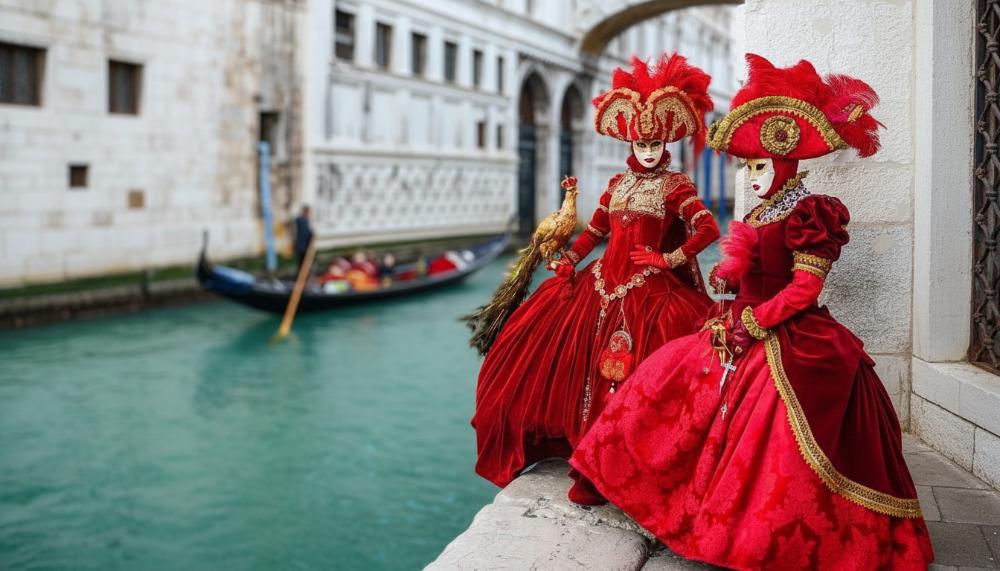
Venice Carnival runs for about two weeks leading up to Lent, and the entire city transforms. People walk around in full 18th-century costumes, and the piazzas become stages for performances and parades.
The big events require tickets ($100+), but just wandering the streets and people-watching is free. St. Mark’s Square is the center of the action, but the smaller neighborhoods have their own celebrations.
Best hotels near San Marco
Staying near San Marco means you’re in the thick of Carnival, but it also means you’ll pay more. Hotel ai Reali is a new luxury option with Grand Canal views and modern design. Rates in February start around $300 per night.
- Hotel Danieli: Historic luxury palace, waterfront location, rooftop terrace, rooms from $500/night
- Locanda Orseolo: Boutique property, quiet courtyard, budget-friendly at $150/night, 5-minute walk to San Marco
- Ca’ Sagredo: 15th-century palace, Grand Canal views, frescoed ceilings, museum-quality art collection
- Palazzo Veneziano: Recently renovated, canal-side terrace, contemporary design meets historic architecture
- Hotel Metropole: Antique-filled rooms, Michelin-starred restaurant, romantic atmosphere, spa on-site
- Baglioni Hotel Luna: Oldest hotel in Venice, Tiepolo ballroom, direct access to San Marco Square
- Palazzina Grassi: Philippe Starck design, modern boutique style, canal views, intimate with 22 rooms
Book early for Carnival. Hotels fill up months in advance.
16. Torres del Paine, Chile
Torres del Paine in February is peak summer in Patagonia, and the weather is as good as it gets. Long daylight hours, wildflowers in bloom, and the trails are packed but manageable.
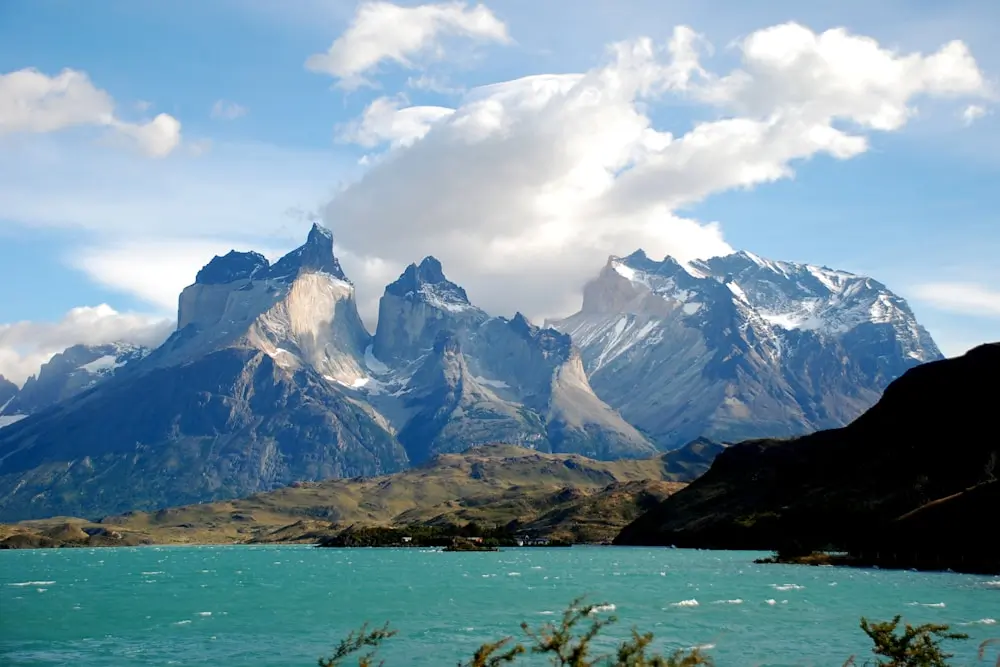
The W Trek is the most popular multi-day hike in the park, and it covers the highlights: Grey Glacier, the French Valley, and the base of the towers. You can do it in 4–5 days, staying in refugios (mountain huts) or camping.
Book refugios at least six months in advance. They fill up fast, and walk-ins are rare. Camping is more flexible, but you’ll need to carry your gear.
Wildlife spotting in Torres del Paine
Patagonia has incredible wildlife, and February is when you’ll see the most activity. Guanacos (wild relatives of llamas) are everywhere, and condors soar over the valleys.
- Guanacos: Throughout the park, easy to spot
- Andean condors: Look for them near cliffs and ridges
- Pumas: Rare but possible, especially in the eastern valleys
Bring binoculars and be patient. The landscapes alone are worth the trip.
17. Kyoto, Japan
Kyoto in February is cold and quiet, but the early plum blossoms start to appear, and the temples are serene without the crowds. It’s not peak season, which means better prices and a more peaceful experience.
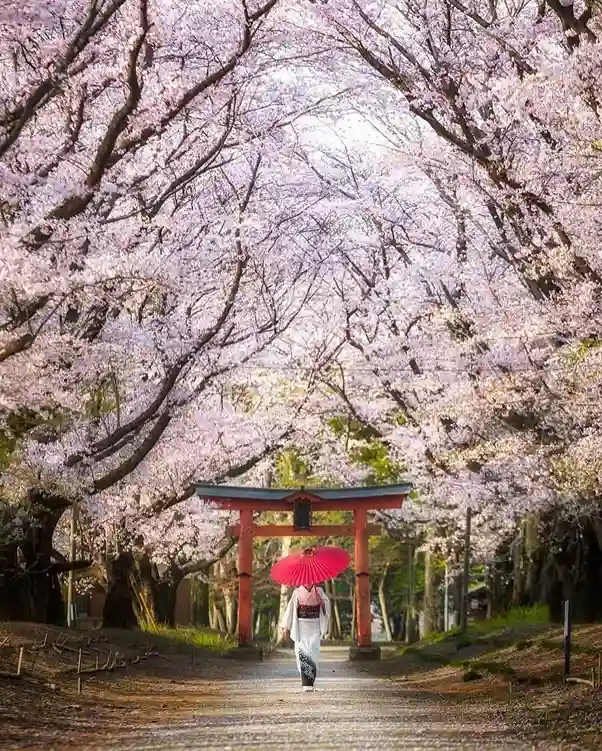
Cherry blossoms steal the show in spring, but plum blossoms bloom earlier and are just as beautiful. Kitano Tenmangu Shrine has one of the best plum groves in Kyoto, with over 1,500 trees that bloom in shades of white, pink, and red.
Entry is free, and the gardens are open daily. Late February is when the blooms peak.
Kaiseki dining in Kyoto
Kaiseki is traditional Japanese haute cuisine, and Kyoto is where it’s done best. The meals are multi-course, beautifully presented, and use seasonal ingredients. Expect to pay $100–$300 per person, depending on the restaurant.
- Kikunoi: Michelin-starred, elegant, reservation required
- Gion Karyo: More affordable, excellent quality, intimate setting
- Hyotei: Historic, morning kaiseki breakfast, unique experience
Book well in advance, and dress appropriately. Jeans and sneakers won’t cut it.
18. Banff, Canada
Banff in February is winter wonderland territory. Deep snow, frozen lakes, and some of the best skiing in North America. If you’re into winter sports, this is where you want to be.
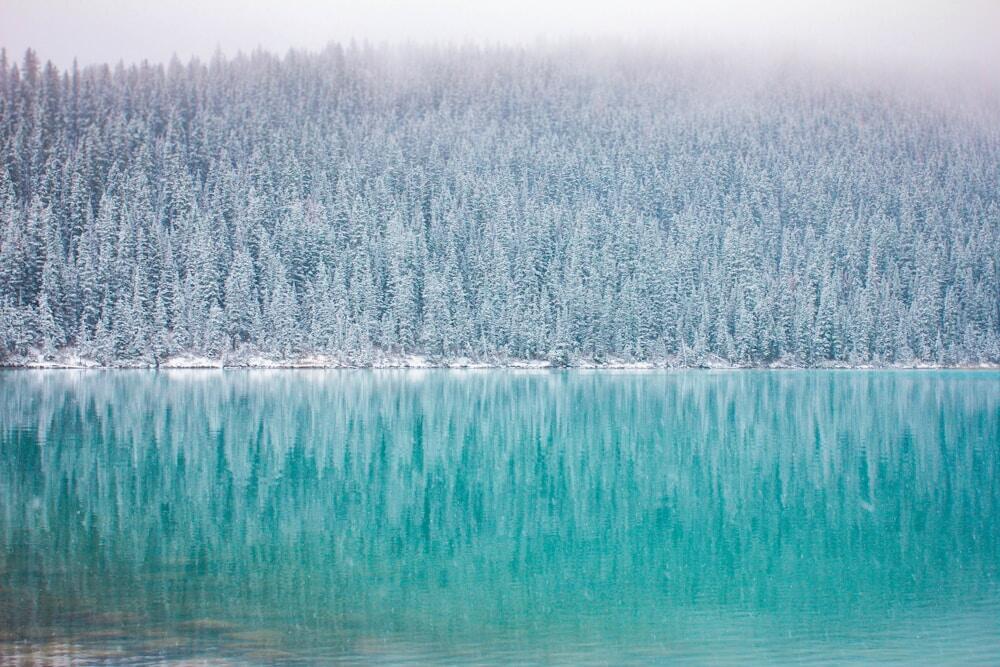
Lake Louise Ski Resort has over 4,200 acres of terrain, and February is when the snowpack is deep and consistent. The views alone are worth the trip. You’re skiing with the Canadian Rockies in every direction.
Lift tickets are around $120 USD per day, and rentals are available on-site. The base area has restaurants and lodges if you need a break.
Best mountain lodges in Banff
Staying slopeside at Lake Louise is pricier, but it saves you the 45-minute drive from Banff each day. Fairmont Chateau Lake Louise is the iconic choice. Expensive but worth it if you’re celebrating something.
- Fairmont Chateau Lake Louise: Lakefront luxury, multiple restaurants, ski valet service, rooms from $600/night
- Baker Creek Mountain Resort: Cozy log cabins, fireplaces, more affordable at $200/night, quieter setting
- Moose Hotel & Suites: In Banff town, modern design, rooftop hot tubs, walking distance to nightlife
- Skoki Lodge: Backcountry lodge accessible only by cross-country skiing, rustic charm, no electricity, unique experience
- Post Hotel & Spa: Five-star property in Lake Louise village, award-winning restaurant, riverside location
- Rimrock Resort Hotel: Perched on Sulphur Mountain, panoramic views, hot springs access, rooms from $350/night
- Storm Mountain Lodge: Historic log cabins, wilderness setting between Banff and Lake Louise, intimate with 14 cabins
Book early for February. This is peak ski season, and availability is limited.
19. Iceland
Iceland in February is dark, cold, and incredible. The Northern Lights are at their peak, the winter landscapes are otherworldly, and the crowds are minimal.
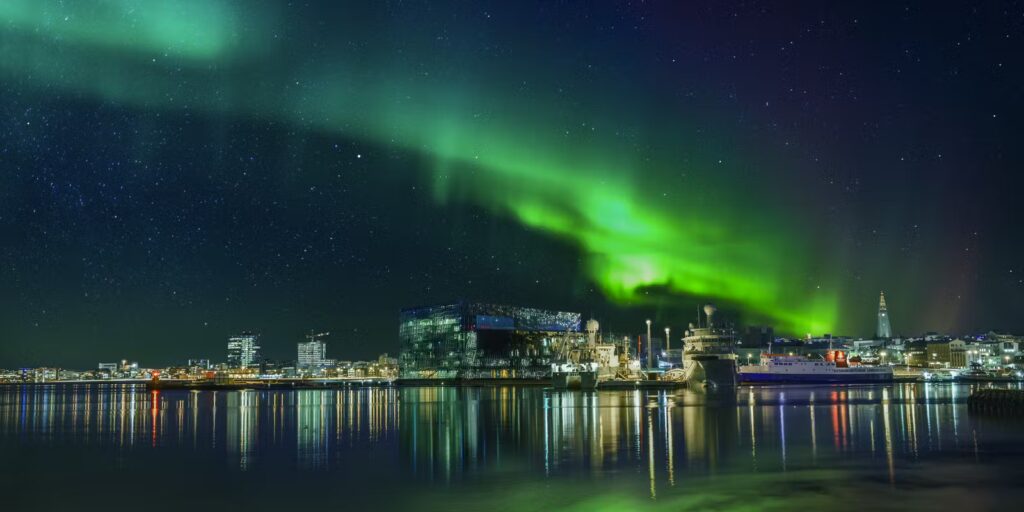
February offers long, dark nights, which means more opportunities to see the aurora borealis. The lights are visible from September to April, but February is prime time because of the extended darkness and relatively stable weather.
Get away from Reykjavik’s light pollution. The Golden Circle, Vik, and the Snaefellsnes Peninsula all offer great viewing spots. Tours cost $60–$100, or you can rent a car and hunt for them yourself.
Iceland Golden Circle route highlights
The Golden Circle is Iceland’s most popular day trip, and it covers three major sites: Thingvellir National Park, Geysir, and Gullfoss waterfall. You can drive it yourself in about 5–6 hours, or take a guided tour.
| Stop | What to See | Time Needed |
|---|---|---|
| Thingvellir | Tectonic plates, Silfra fissure | 1–2 hours |
| Geysir | Strokkur geyser erupts every 10 min | 30 minutes |
| Gullfoss | Massive two-tiered waterfall | 30 minutes |
The roads can be icy, so rent a 4WD vehicle and drive carefully.
20. Zermatt, Switzerland
Zermatt in February is classic Alpine skiing with the Matterhorn as your backdrop. The village is car-free, the snow is deep, and the skiing is world-class.
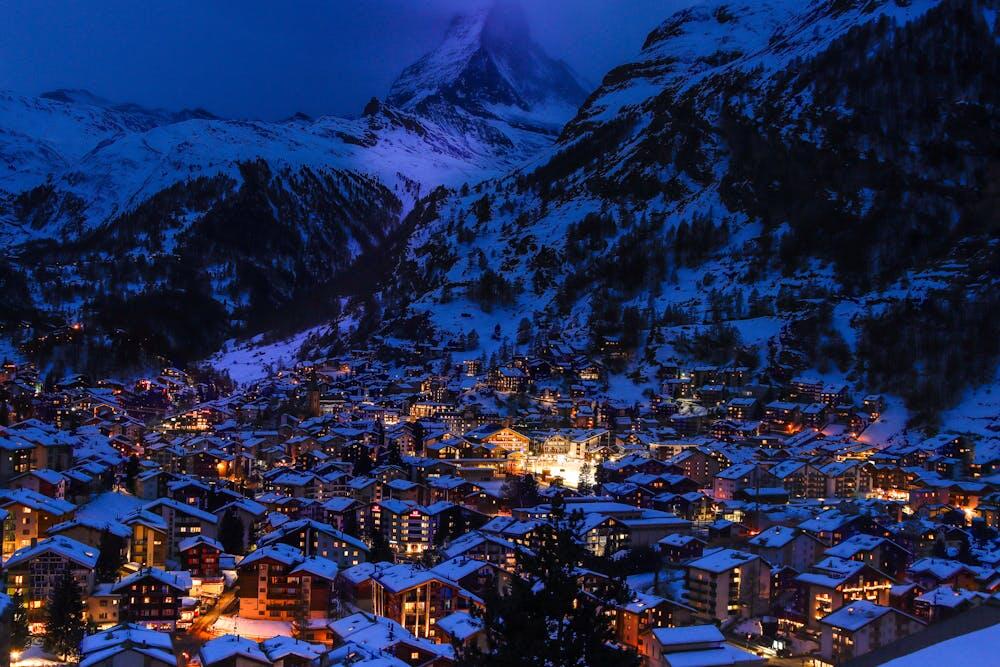
Zermatt’s ski area connects to Cervinia in Italy, giving you over 200 miles of runs. The Matterhorn Glacier Paradise lift takes you to 12,700 feet, and the views from the top are unreal.
Lift tickets are expensive at around $90 USD per day, but the terrain and scenery justify the cost. Rentals are available in the village.
These 20 spots show you just how versatile February can be. Want to ski in the Swiss Alps? Done. Prefer lounging on a beach in the Caribbean? Easy. Looking for Venice during Carnival or Mardi Gras in New Orleans? Both are happening right now.
The best part is you’re traveling when most people aren’t, so you get better prices and smaller crowds. Pick your vibe and go.

